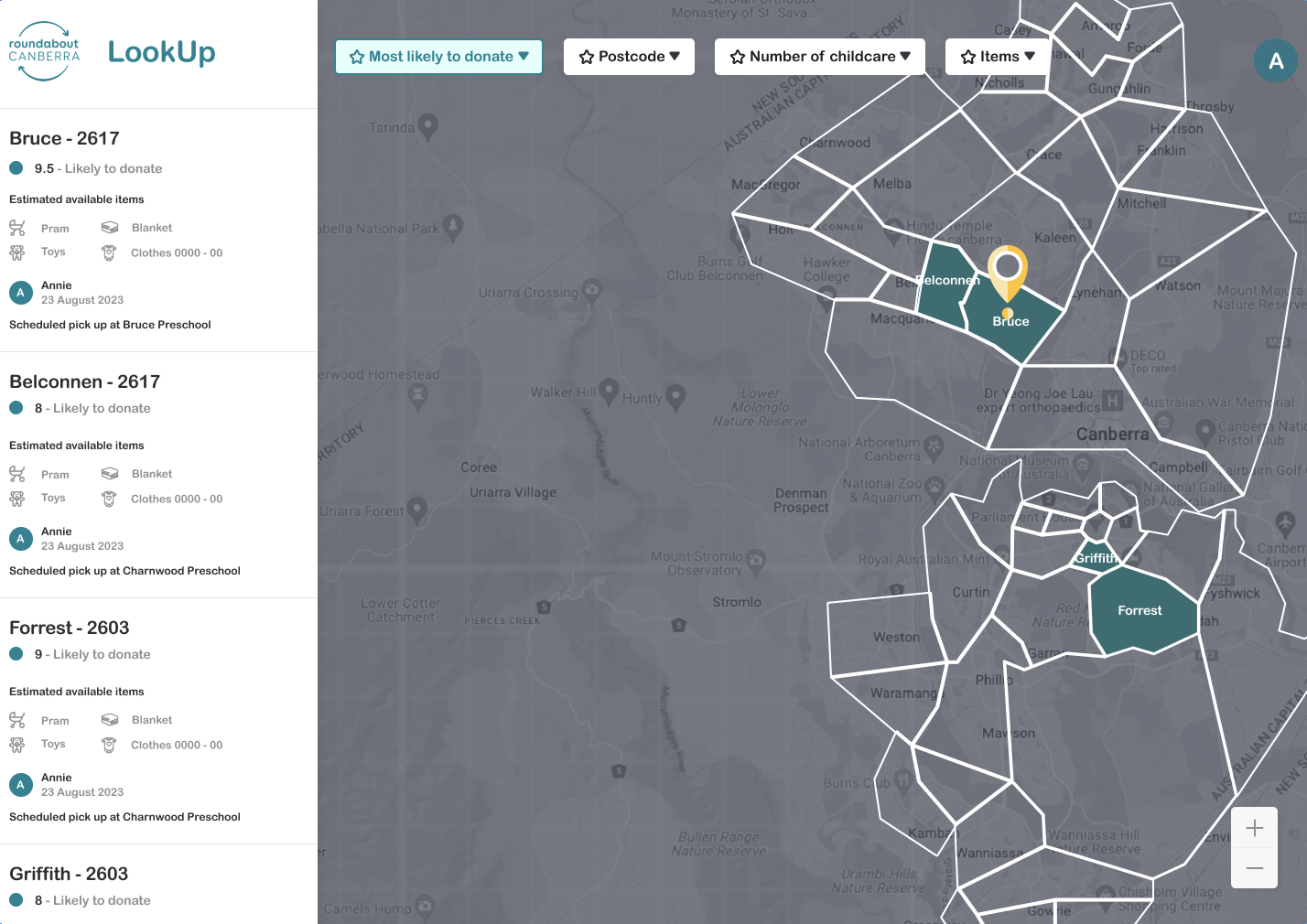Team Name
Quantium Quants
Team Members
5 members
with unpublished profiles.
Project Description
We developed a web application for Roundabout employees to use and determine which suburb in the ACT is most likely to donate second-hand baby goods. We utilised the ABC socio-economic index data set and the ACT education database to include several factors such as the number of primary schools in a region, the number of families in a particular suburb and the number of children those families have into our propensity score in order to integrate this into the web application we develop.
The solution will enable Roundabout employees to figure out propensity scores in different ACT suburbs so that they will be able to determine which suburbs will be best to collect from.
Data Story
Our main source of data is taken from the ABS Socio-Economic Indexes for Areas, in which we take a look at the relative index of relative socio-economic advantage and disadvantage of people living in ACT. We also utilised data from the ACT education directorate.
What we aimed for is to come up with a propensity score that is going to determine which suburb in ACT will be the most likely to donate their second-hand goods. We included many different factors and components such as the number of schools located in a particular suburb, the number of families, the number of children those families have as well as their age differences - these are a few examples of data that we integrated into our propensity score formula in order to help develop our web application solution.
Socio-Economic Indexes for Areas
Description of Use
We use this data to develop a propensity score that is going to help us determine which suburb has the most likelihood to donate baby and children's second-hand goods.
Data Set
Koori Preschools
Description of Use
We use this data to develop a propensity score that is going to help us determine which suburb has the most likelihood to donate baby and children's second-hand goods.
Data Set
Census of ACT Schools (February 2022)
Description of Use
We use this data to develop a propensity score that is going to help us determine which suburb has the most likelihood to donate baby and children's second-hand goods.
Data Set
Schools ABS
Description of Use
We use this data to develop a propensity score that is going to help us determine which suburb has the most likelihood to donate baby and children's second-hand goods.
Data Set
List of Non-Government Schools
Description of Use
We use this data to develop a propensity score that is going to help us determine which suburb has the most likelihood to donate baby and children's second-hand goods.
Data Set
Public Primary Schools
Description of Use
We use this data to develop a propensity score that is going to help us determine which suburb has the most likelihood to donate baby and children's second-hand goods.
Data Set
Preschools (Public)
Description of Use
We use this data to develop a propensity score that is going to help us determine which suburb has the most likelihood to donate baby and children's second-hand goods.
Data Set
ACT Population Projections by Suburb (2015 - 2020)
Description of Use
We use this data to develop a propensity score that is going to help us determine which suburb has the most likelihood to donate baby and children's second-hand goods.
Data Set


